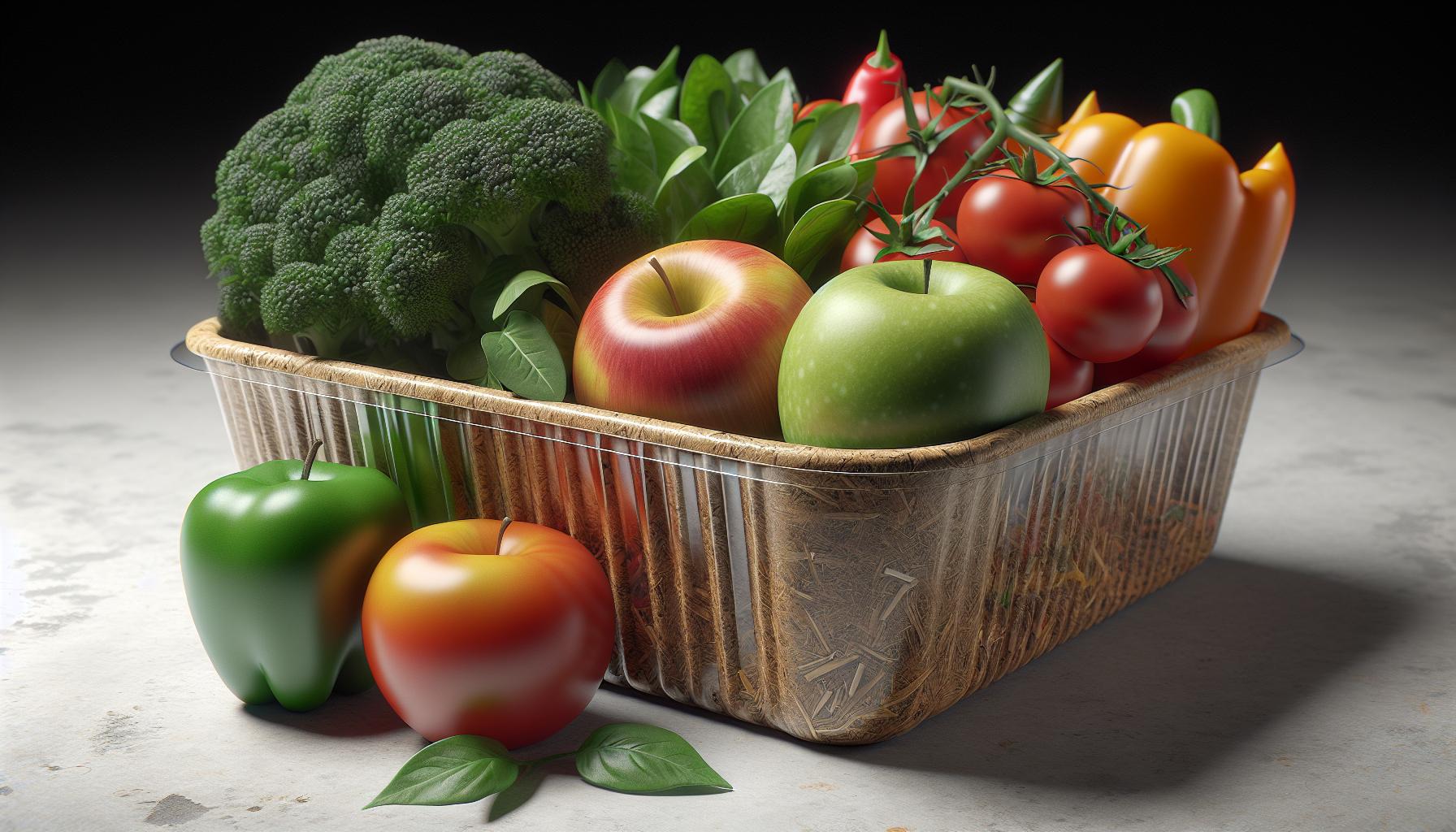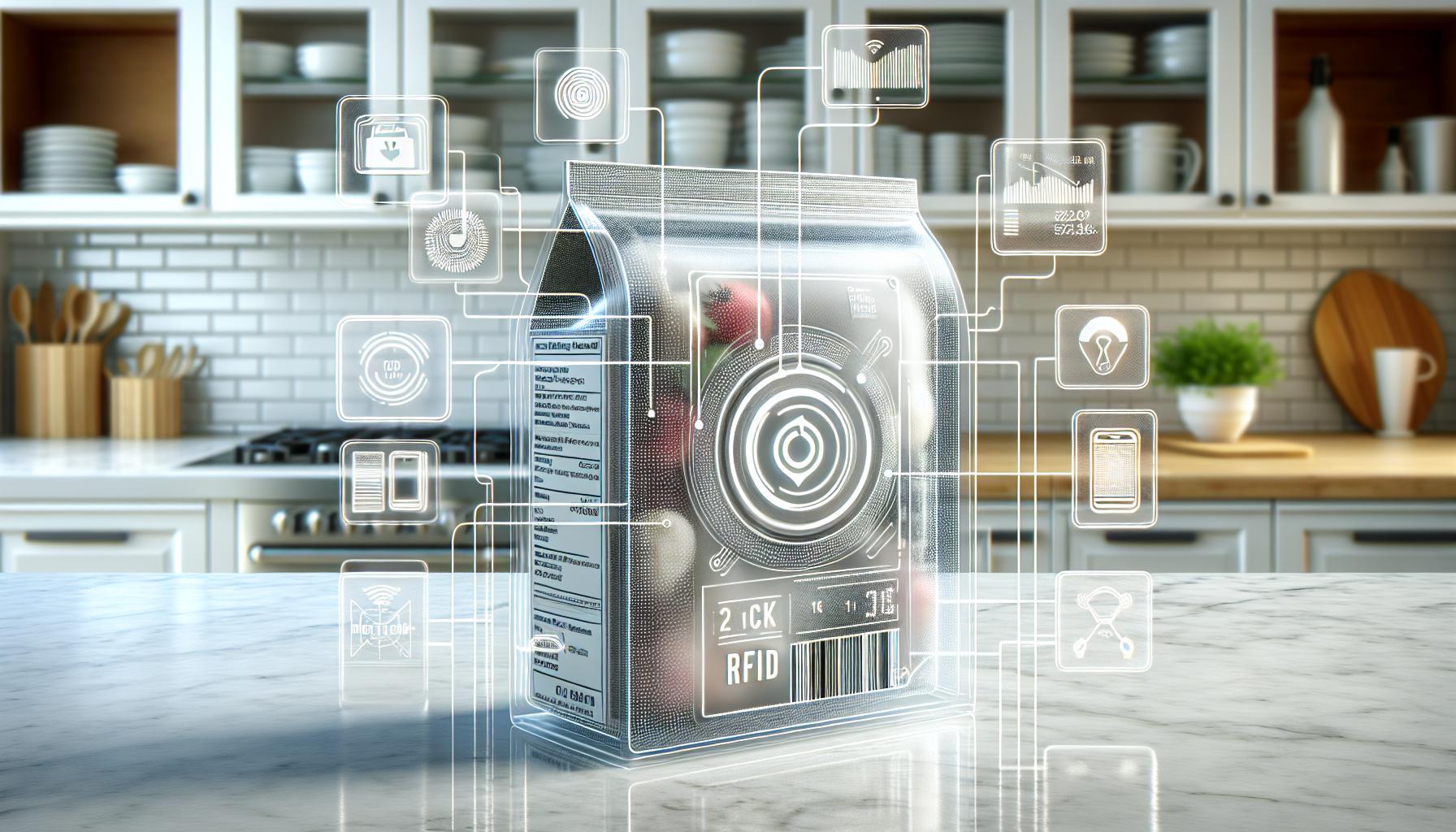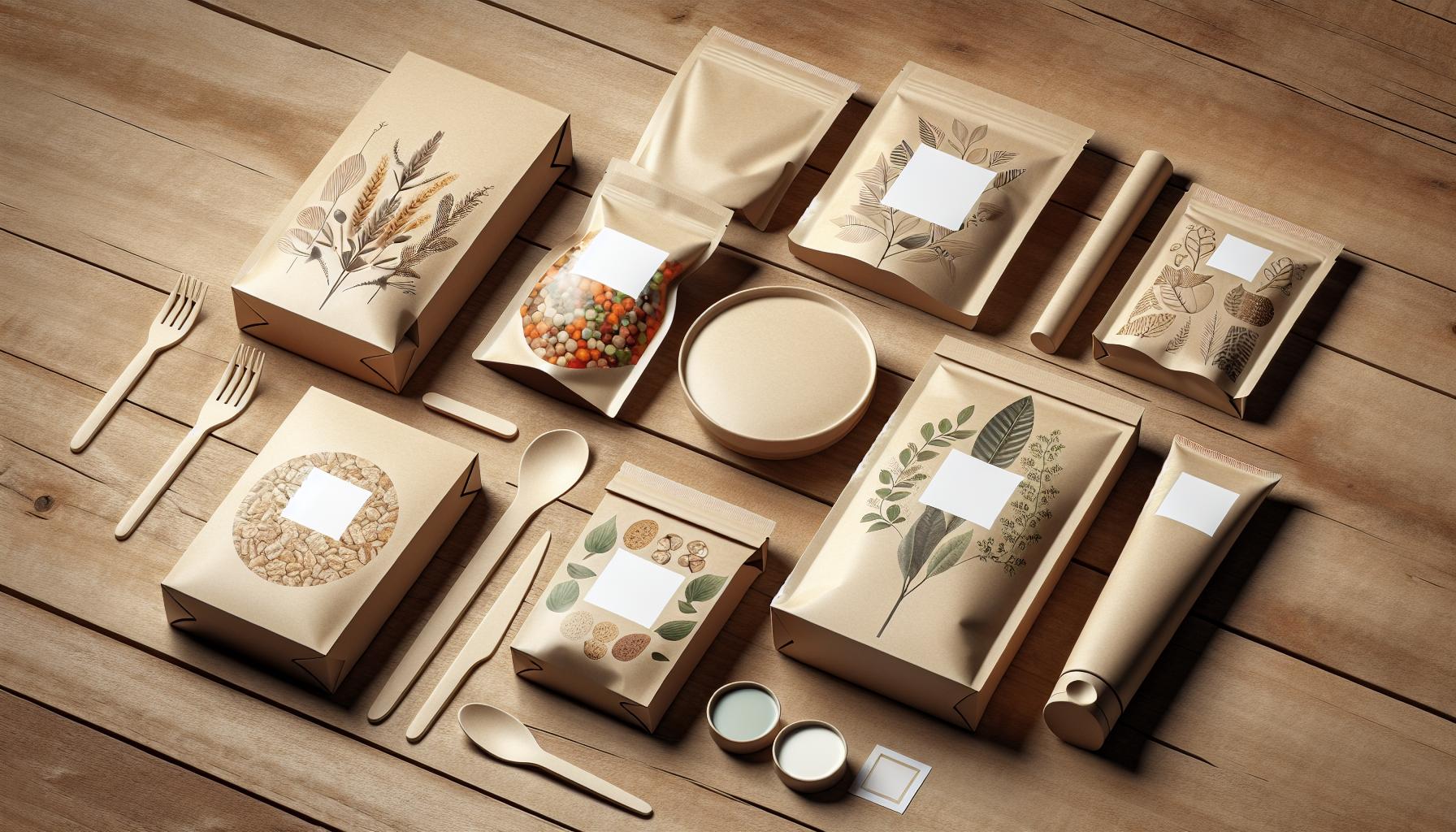The Food Packaging Trends industry is experiencing a revolutionary makeover. From smart containers that tell you when your lettuce is about to go bad to packaging that you can actually eat – today’s innovations are transforming how we store protect and consume our food.
Sustainability leads the charge in this Food Packaging Trends revolution with eco-friendly alternatives rapidly replacing traditional materials. Consumers aren’t just looking for products anymore – they’re demanding packaging solutions that align with their environmental values. The industry has responded with biodegradable options plant-based materials and zero-waste designs that are both functional and planet-friendly.
These shifts in packaging trends reflect broader changes in consumer behavior and environmental consciousness. As technology advances and sustainability becomes increasingly crucial manufacturers and brands are reimagining what’s possible in food packaging while keeping food safety convenience and environmental impact at the forefront of innovation.
Food Packaging Trends
The global food packaging market reached $305.31 billion in 2022. This sector experiences continuous evolution driven by technological advancements, sustainability demands, and changing consumer preferences.
Key Market Drivers
The Food Packaging Trends industry faces transformation through several key factors:
- Digital Integration: Smart packaging technologies enable real-time monitoring of food freshness through QR codes embedded sensors
- Material Innovation: Advanced polymers bioplastics create stronger lighter packaging options
- Automation: Robotics AI systems optimize production efficiency reducing labor costs by 35%
- Regulatory Compliance: Stricter food safety standards demand enhanced barrier properties traceability features
- Supply Chain Optimization: Connected packaging solutions improve inventory management reduce waste by 25%
| Market Driver | Impact Percentage |
|---|---|
| Sustainability | 42% |
| Smart Technology | 28% |
| Food Safety | 18% |
| Cost Efficiency | 12% |
- Online Shopping Growth: E-commerce demands robust packaging solutions with 63% of consumers prioritizing damage protection
- Health Consciousness: Clear nutritional labeling influences 78% of purchase decisions
- Portion Control: Single-serve packaging sales increased 31% as consumers seek convenience
- Environmental Awareness: 72% of consumers prefer recyclable sustainable packaging options
- Premium Experience: Enhanced unboxing experiences drive 45% higher brand engagement
| Consumer Trend | Market Share |
|---|---|
| Eco-friendly Options | 38% |
| Convenience Features | 29% |
| Smart Labels | 21% |
| Premium Design | 12% |
Sustainable Packaging Solutions

The Food Packaging Trends industry embraces eco-conscious packaging alternatives to reduce environmental impact. Manufacturers integrate sustainable materials with innovative designs to meet growing consumer demand for environmentally responsible packaging solutions.
Biodegradable Materials
Biodegradable packaging materials decompose naturally without harmful environmental effects. Plant-based polymers like PLA (Polylactic Acid) derived from corn starch or sugarcane create food containers that break down in industrial composting facilities within 180 days. Mushroom-based packaging provides protective cushioning for delicate food items through mycelium growth processes. Agricultural waste products such as wheat straw fibers form sturdy containers for dry goods packaging. Marine-based alternatives including seaweed extracts create flexible films for food wrapping applications. These materials maintain food freshness while offering end-of-life biodegradation benefits.
Recyclable Packaging Innovations
Modern recycling technologies transform traditional packaging materials into sustainable options. Advanced sorting systems separate multi-layer materials with 95% accuracy for efficient recycling streams. Mono-material designs eliminate composite layers to enhance recyclability rates. Clear PET containers incorporate 100% recycled content while maintaining food-grade quality standards. Aluminum packaging innovations create infinitely recyclable containers with minimal material loss. Digital watermarks embedded in packaging enable automated sorting facilities to process materials more effectively. These developments support circular economy principles in food packaging systems.
Smart Packaging Technologies

Smart packaging technologies revolutionize food preservation through advanced monitoring systems integrated directly into packaging materials. These innovations enhance food safety tracking capabilities while extending shelf life through real-time environmental controls.
Active Packaging Systems
Active Food Packaging Trends systems incorporate components that interact directly with food products to maintain quality. Oxygen scavengers absorb excess oxygen to prevent oxidation spoilage in meat products. Moisture regulators control humidity levels in fresh produce packaging using specialized films. Antimicrobial packaging releases compounds that inhibit bacterial growth on perishable items. Temperature-responsive materials adjust their properties to maintain optimal storage conditions. These systems extend product shelf life by 15-40% compared to traditional packaging methods.
Intelligent Packaging Features
Electronic sensors embedded in packaging materials monitor food freshness through chemical indicators. Time-temperature indicators display color changes when products experience temperature abuse during transport. Radio-frequency identification (RFID) tags track product location movement across supply chains. Digital printed codes connect consumers to detailed product information through smartphone apps. Near-field communication (NFC) technology enables instant access to nutritional data expiration dates through contactless scanning. These features provide real-time monitoring with 99.9% accuracy in temperature tracking within 0.5°C variance.
| Smart Packaging Feature | Impact |
|---|---|
| Oxygen Scavengers | 15-40% shelf life extension |
| Temperature Monitoring | 0.5°C accuracy |
| RFID Tracking | 99.9% location accuracy |
| NFC Information Access | Instant data retrieval |
Minimalist Design Movement

The minimalist design movement emphasizes clean aesthetics through simple packaging elements. This approach focuses on essential information display while eliminating visual clutter to create a premium brand perception.
Clean Label Packaging
Clean label packaging incorporates transparent ingredient lists with easy-to-read typography on uncluttered surfaces. Leading brands use negative space to highlight product authenticity with 72% of consumers preferring packages that display clear nutritional information. Modern clean label designs feature:
- Natural color palettes with muted tones
- Single-font typography systems
- Organized information hierarchies
- Transparent ingredient panels
- Certification logos placed strategically
Simplified Graphics
Simplified graphics eliminate complex design elements in favor of bold iconography. Research shows 65% of consumers make purchasing decisions within 3 seconds, making simple visuals crucial for quick recognition. Key elements include:
- Geometric shapes for brand identification
- Monochromatic color schemes
- Icon-based communication systems
- Limited text overlays
- White space maximization
- Single-line illustrations
- Focused product photography
- Essential product information
- Clear sustainability messaging
- Direct ingredient transparency
- Prominent origin stories
Food Safety and Preservation
Advanced Food Packaging Trends safety protocols integrate innovative preservation methods that protect product integrity through enhanced packaging technologies. These developments address consumer demands for longer-lasting freshness while maintaining nutritional value.
Extended Shelf Life Solutions
Modified Atmosphere Packaging (MAP) technology extends product shelf life by 40% through precise gas composition control inside packaging. Active packaging systems incorporate oxygen absorbers moisture regulators to maintain optimal conditions for perishable foods. Time temperature indicators (TTIs) monitor freshness levels providing real time data on product quality. Vacuum skin packaging creates an airtight seal reducing food waste by 75% compared to traditional methods. Advanced barrier materials block UV rays moisture oxygen preventing premature spoilage.
| Preservation Method | Shelf Life Extension |
|---|---|
| MAP Technology | 40% increase |
| Vacuum Skin Packaging | 75% waste reduction |
| Oxygen Scavengers | 30% increase |
| UV Blocking Materials | 25% increase |
Anti-Microbial Packaging
Antimicrobial packaging materials contain active compounds that inhibit bacterial growth reducing foodborne illness risks by 85%. Silver nanoparticles embedded in polymer films provide continuous protection against pathogens throughout the product lifecycle. Essential oil infused packaging materials offer natural antimicrobial properties extending shelf life by 20%. Smart sensors detect microbial contamination alerting consumers before food spoilage occurs. Nanotechnology enables targeted release of antimicrobial agents maintaining food safety standards.
| Antimicrobial Solution | Effectiveness Rate |
|---|---|
| Silver Nanoparticles | 99% pathogen reduction |
| Essential Oil Infusion | 20% shelf life extension |
| Smart Sensors | 95% detection accuracy |
| Nanotech Solutions | 90% contamination prevention |
Changing Retail Landscape
The retail food packaging sector adapts continuously to evolving consumer preferences and shopping behaviors. Digital commerce expansion creates new packaging requirements while physical retail locations embrace convenience-focused solutions.
E-commerce Packaging Demands
E-commerce food packaging prioritizes protection during transit with 78% of retailers implementing enhanced cushioning systems. Multi-layer protective materials guard against temperature fluctuations while maintaining product integrity through extended shipping cycles. Specialized designs incorporate tamper-evident seals, moisture barriers and impact-resistant corners to prevent damage during last-mile delivery.
| E-commerce Packaging Requirements | Implementation Rate |
|---|---|
| Enhanced cushioning systems | 78% |
| Temperature control features | 65% |
| Tamper-evident seals | 92% |
| Impact-resistant design | 83% |
Grab-and-Go Solutions
Ready-to-eat packaging solutions dominate convenience store shelves with resealable features appearing on 62% of prepared food containers. Single-serve portions incorporate ergonomic designs that fit car cupholders and laptop bags for mobile consumption. Microwaveable materials enable direct heating while maintaining structural integrity at high temperatures. Smart labels display preparation instructions through QR codes that link to detailed cooking guides.
| Grab-and-Go Features | Market Share |
|---|---|
| Resealable containers | 62% |
| Mobile-friendly design | 55% |
| Microwave-safe materials | 87% |
| Smart label integration | 43% |
Food packaging continues to evolve rapidly with innovations that prioritize both consumer needs and environmental responsibility. The industry’s shift toward sustainable materials biodegradable solutions and smart technologies demonstrates its commitment to meeting modern challenges head-on.
As manufacturers embrace these transformative changes they’re not just responding to current demands – they’re actively shaping the future of food packaging. From advanced safety features to eco-friendly designs the industry stands at the forefront of technological advancement and environmental stewardship.
The fusion of sustainability convenience and innovation will undoubtedly drive the next generation of food packaging solutions creating a more efficient and environmentally conscious food industry for everyone.



